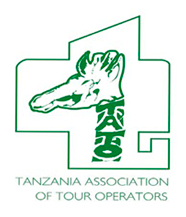Location and How to Get There
Just prior to entering the Serengeti is one of the seven natural wonders of the world: Ngorongoro Crater. It takes about 3 hours drive to the crater from Arusha.
History and Highlights
The Ngorongoro Conservation area is where a high concentration of Maasai lives and grazes their cattle. Within the Ngorongoro Crater and the area surrounding it, the Maasai people share their resources with the animals. This area includes Oldonyo Lengai, a Maasai holy site which remains an active volcano to the northeast of Ngorongoro Crater. It also includes Oldupai Gorge, famous for being the location of the oldest human footprint on earth.
Ngorongoro derives its name from the Maasai tribe who are the native peoples of the area. Referred to as the “crown jewel” of the Serengeti, Ngorongoro’s breathtaking views overlook a 2,000 foot drop to its volcanic caldera crater floor formed over 3 million years ago. A caldera forms when the land collapse following a volcanic eruption. Ngorongoro Crater’s caldera is unique. It is the world’s largest caldera with its high elevation at its rim of 10,000 ft elevation and its floor at 5,400 ft elevation.
Wildlife and Natural Highlights
The Ngorongoro Craters 100 square mile caldera floor eco-culture is home to most of the animal species found in East Africa. It is inhabited by 30,000 animals during the dry season. The cool breezes at its rim creates ideal conditions within the crater to keep it cool during hot days, which encourages animals to enter it. Early morning is an especially good time for game viewing. Ngorongoro has 5 different prides of lion in the crater and 3 prides along its rim. There are 7 clans of hyena in the crater of which 3 hunt mainly at night. The hyenas provide 80% of the lions’ food. Its diverse species of wildlife drink from Lake Magadi on the caldera floor and other water sources that flow into the crater. There is a high probability of seeing the endangered black rhinos drinking from its waters. The eruption of the crater deposited volcanic ash throughout the Serengeti which, after 3 million years, created mineral rich fertile soil with high concentrations of phosphorous that grows short grasses the wildebeest thrive on, as every cell of their body contains phosphorous. The short grasses that grow on the southern Serengeti Plain during the rainy calving season help the young wildebeest grow strong grazing on them which prepares them for the migration season ahead. Ngorongoro’s unique ecosystem is defined by the rim of the Great Rift Valley wall escarpment that makes it difficult for animals to migrate easily from the crater’s natural enclosure.
Olmoti Crater
The Ngorongoro Conservation area includes Olmoti Crater a medium size crater you can hike into by foot, just an hour drive from the Lemala Gate. The climb to the crater floor is uphill. Armed guards accompany visitors. En route to the crater floor are spectacular flowering plants. At the base of the crater is a waterfall tourists can visit and is often inhabited by eland and buffalo.
Empakaai Crater
Empakaai Crater is arguably the most beautiful place within the Ngorongoro Crater area. It is 2 hours drive from Lemala Gate. From its rim you can see the active volcanic mountain, Oldonyo Lengai. Looking down into the crater it appears pink from the vast number of flamingos drinking from the lake on the crater floor. Along the walls of the crater are a variety of colorful flowers. Hiking to the floor of the crater takes about half an hour while the hike back up takes about an hour. Hikers are always accompanied by armed guards.
High Season
The Ngorongoro’s short rainy season (November-December) and long rainy season (March-May) are considered “off season,” but this is an exciting period to visit the crater as the animals congregate on the short grassy plains and give birth during “calving season” (January-mid-March). Late February-early March is a great time to view the Great Migration which attracts many predators resulting in spectacular interactions between predator and prey. During the dry season (June-October), is the best time to view game as the animals concentrate on permanent water sources.
Activities and Culture
Game drives, hikes, crater climbs and cultural visits can take place in the Ngorongoro Crater area. It is the only place in Africa where the 5 major ethnic tribes of Africa can be found. This includes the Bantus, Nilotics (Maasai tribe), Cushitics (Iraqw tribe), Haeminiloticus ( Datoga tribe), and the Khoisan (Hadzabe tribe) that speak with clicking sounds. Visits to these tribal groups are part of Tanzania Roadside Expeditions cultural itineraries. The Ngorongoro Crater is an especially good place for photographic safari expeditions as the animals get close enough to the jeeps for the photographer to click excellent close-ups of the wildlife.






